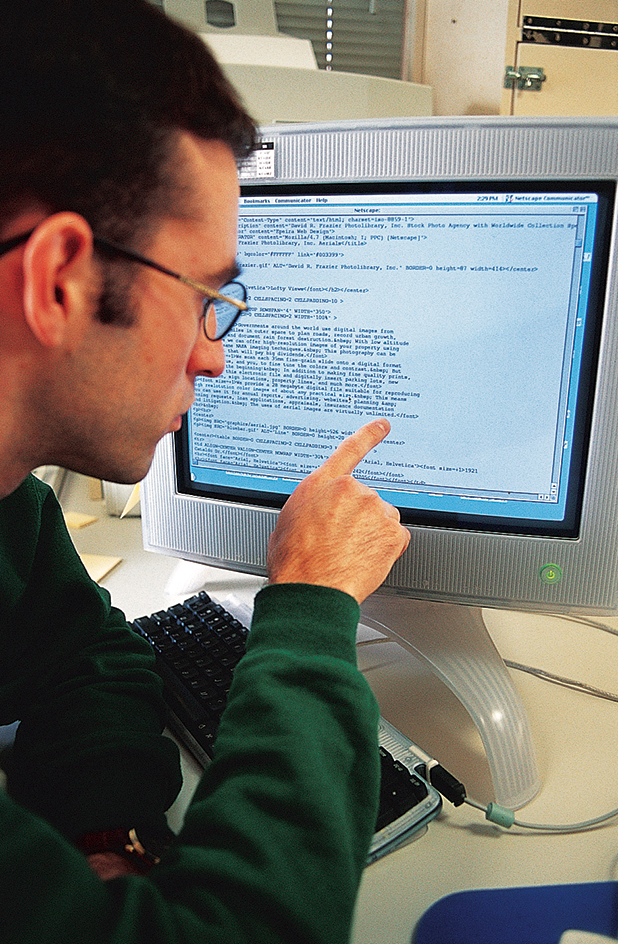Computer monitor is an electronic screen that displays words, images, and videos from a connected computer. In many desktop computers, the monitor is a separate unit from the actual computer. Such a monitor connects to a computer with a cable. In other kinds of desktop computers, the monitor and the computer are housed in the same unit. Laptops and tablet computers also have built-in monitors. Many modern televisions can be used as computer monitors, and monitors can also be used as televisions.

Monitors, like televisions, display images with a grid of colored dots called pixels, short for picture elements. The sharpness of a monitor’s image depends on its resolution—that is, the number of pixels it contains. People generally view monitors at much closer distances than they view televisions. At close distances, individual pixels are more noticeable. Most high-definition televisions contain a grid of 1,920 by 1,080 pixels, no matter their size. Monitors, on the other hand, have a wide variety of resolutions. Smaller monitors, such as those on laptops, generally have lower resolutions than large desktop monitors. But some small computer monitors have even higher resolutions than do high-definition televisions.
Modern monitors, like modern televisions, use thin, flat liquid crystal displays (LCD’s). Liquid crystals are molecules that can change shape quickly in response to electric signals. Each pixel on the monitor is made up of a group of liquid crystals. The molecules can change from clear to dark. A light source, called a backlight, shines from behind the LCD toward the viewer. The pattern of clear and darkened liquid crystals creates the image. Filters on the LCD produce colors.
In many modern monitors, the light source behind the LCD screen is made of light-emitting diodes (LED’s). LED’s are highly efficient light sources that can be manufactured in extremely thin shapes. Other flat-screen monitors use thin fluorescent lamps as their backlights, rather than LED’s.
Some large monitors use plasma technology. In such monitors, an electrically charged gas emits energy on a pattern chemicals called phosphors that coat the screen. The phosphors in turn give off light, producing a bright image. Older, bulkier, computer monitors used a technology called cathode-ray tubes (CRT’s).
See also Touch screen .
